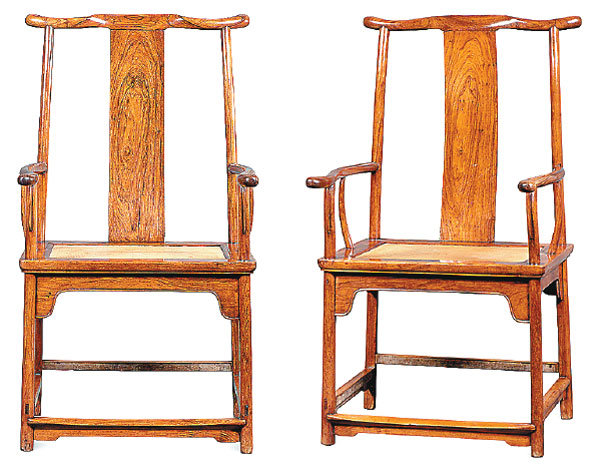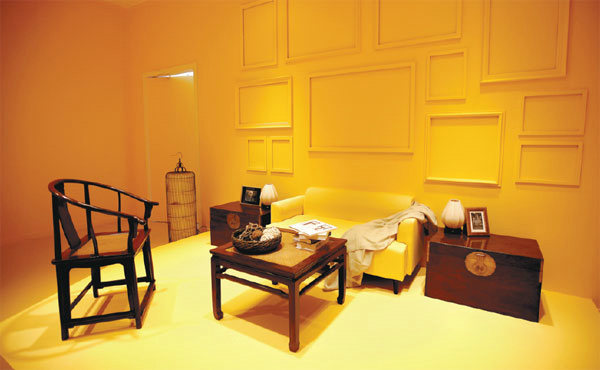- Lot
- Information

A pair of huanghuali chairs on display at the Ming furniture exhibition held in Beijing's 798 art zone
An ongoing exhibition displays Ming furniture in modern settings to demonstrate that the ancient era's aesthetics blend with today's.
The show by China Guardian Auctions in Beijing's 798 art zone also commemorates the centennial of the birth of Wang Shixiang (1914-2009), who's hailed as the "father of classical Chinese furniture".
Wang defined Ming furniture as pieces fashioned from valuable hardwood during the late Ming (1368-1644) and early Qing (1644-1911) dynasties.
The show places the furniture in seven modern rooms, including a sitting room, dining room and the memorial room of Wang Shixiang.
"The antique and the modern complement each other," says Qiao Hao, a Ming furniture expert and head of Guardian's furniture and artwork department.
"The study of Ming furniture is relatively new. It wasn't until the 1980s that Wang published China's first book on it."

A huanghuali two-door cabinet on show
Wang's books include Ming Dynasty Furniture Appreciation and Classic Chinese Furniture: Ming and Early Qing Dynasties. They're recognized as rediscoveries of antique furniture in China.
In modern times, Westerners began collecting and researching Ming furniture before the Chinese.
Foreign scholars and diplomats began collecting them in the 1930s. In 1944, German scholar Gustav Ecke published Chinese Domestic Furniture, the first book in any language on Ming furniture.
The style's appeal hails from its minimalism and Bauhaus-like lines that hide the complexity of mortise and tenon joints, Qiao says.
"It's miraculous that artisans centuries ago could produce furniture that fits modern life," Qiao says.
"It proves Ming furniture can withstand the test of time and transcend distinctions between Eastern and Western aesthetics."
The reasons the era was an apex in furniture craftsmanship include the lift on previously banned maritime trade, which brought precious tropical hardwoods like huanghuali wood from Southeast Asia, and the literati's involvement in furniture design.

Pieces of Ming furniture are exhibited at a space decorated as a sitting room
The exhibition displays a pair of yoke-back chairs with rounded everted ends that belong to the rarest category of Ming yoke-back chairs with surviving specimens.
Qiao explains the show aims to preserve and disseminate the furniture's cultural components while honoring Wang's efforts to do so.
"In the early stage of his collecting, Wang had to choose between buying milk powder for his child and a piece of Ming furniture," Qiao says.
"He wasn't then aware his collection would become so valuable."